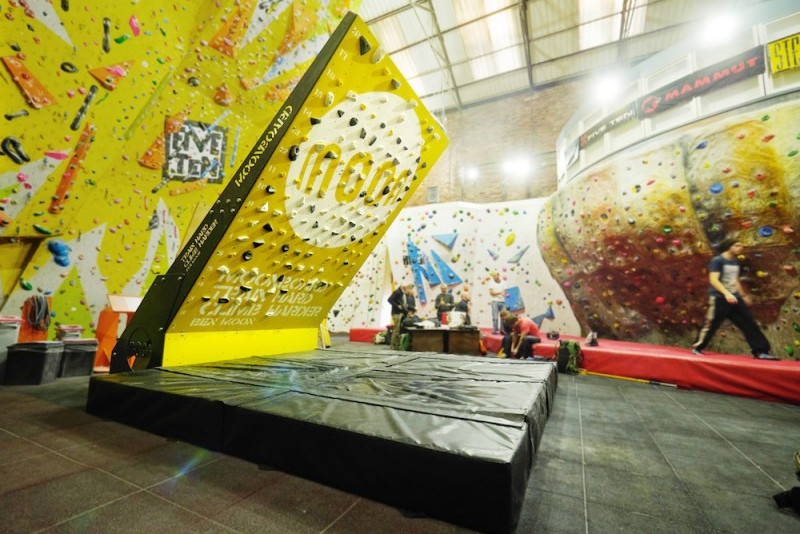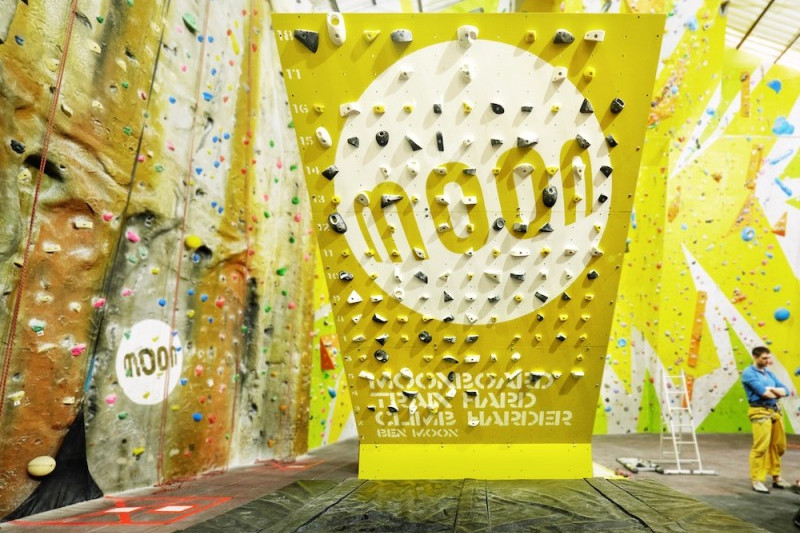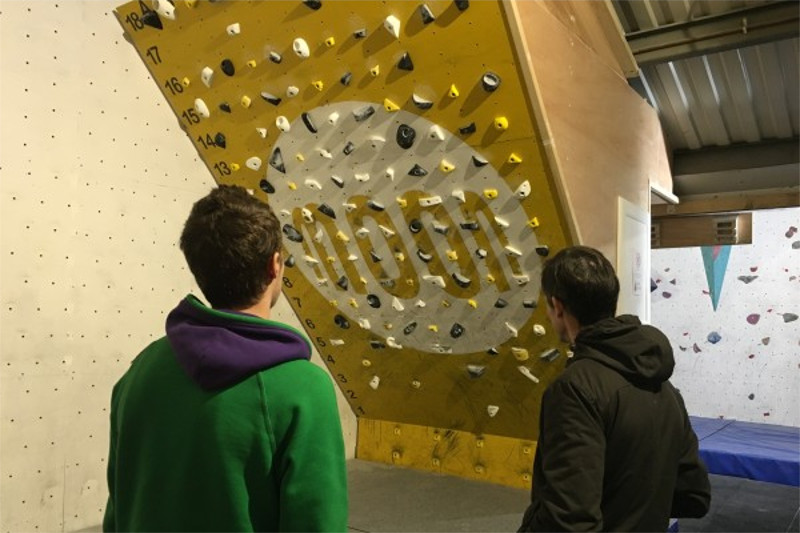Each MoonBoard is made using three sheets of plywood and a kicker panel. It hangs at an angle of 40 degrees, with 140 simple holds attached at precise angles in a grid pattern. Each hold is standardized in its location and orientation, creating a way for two climbers to connect and share problems from separate locations.
Using the free Moon Climbing app, for both Android and iPhone users, climbers with a MoonBoard gain access to thousands of problems to try out. Users can rate a problem, create a new one, log their efforts, and create personal lists. Currently, there are more than 7,500 problems available, with more added every day by climbers like Moon himself.
For added convenience, climbers can enjoy the MoonBoard LED kit. Instead of taping each new route, the app can connect to the kit via Bluetooth, lighting up the start holds, holds in the problem, and finishing holds. With thousands of different problems to climb, an LED system allows a lot more time on the wall.
One issue surrounding the MoonBoard is that it caters exclusively to advanced climbers. The lowest grade within the app is a V4. In the future, this will pose less of a problem. The app will soon feature a setting for a 25-degree board, allowing grades that are achievable by intermediate climbers.
Currently, MoonBoards are available in a mostly DIY form. Branded panels cost about $1,280 and the holds cost about $606. For the LED kit, climbers can spend an additional $648. As is, the MoonBoard needs to be mounted or attached to a ceiling. Additionally, climbers can pick up a fully stocked, freestanding MoonBoard for $9,504.





